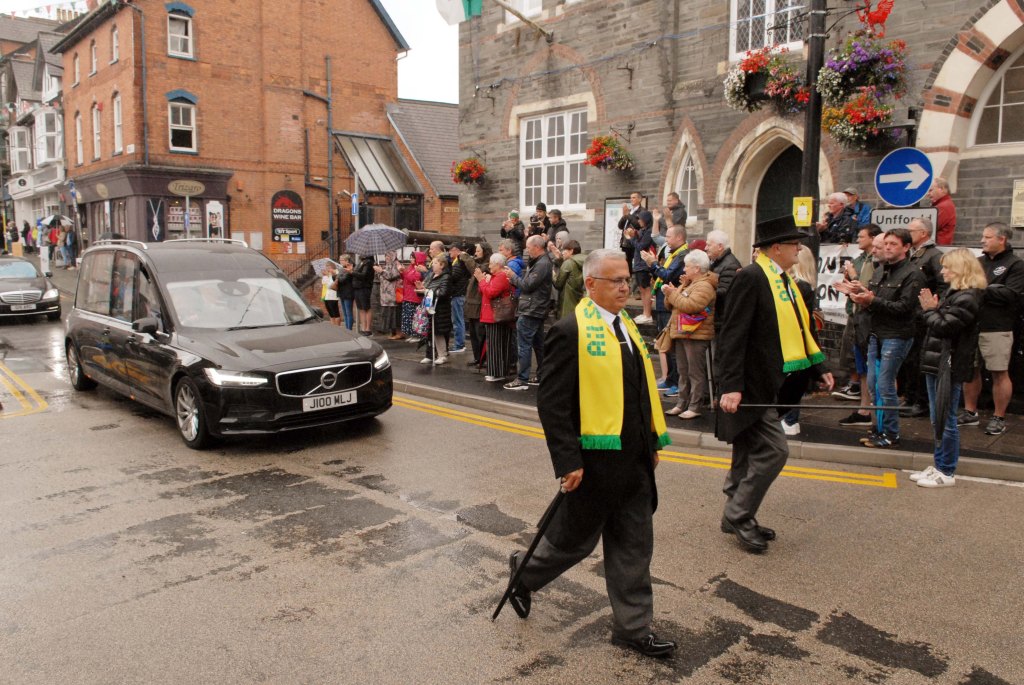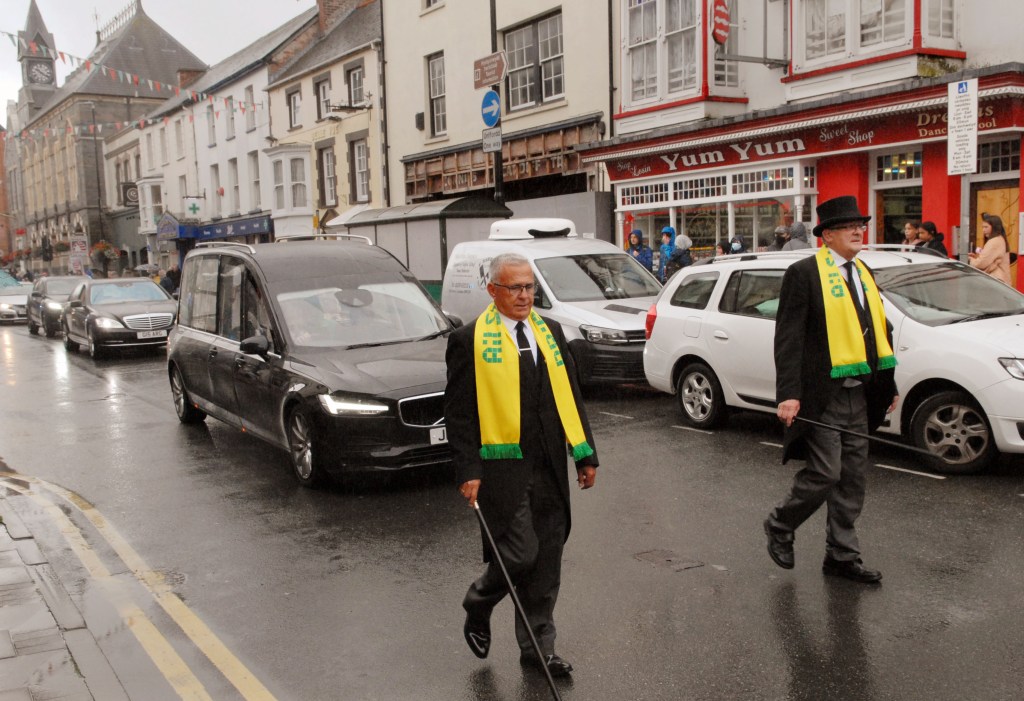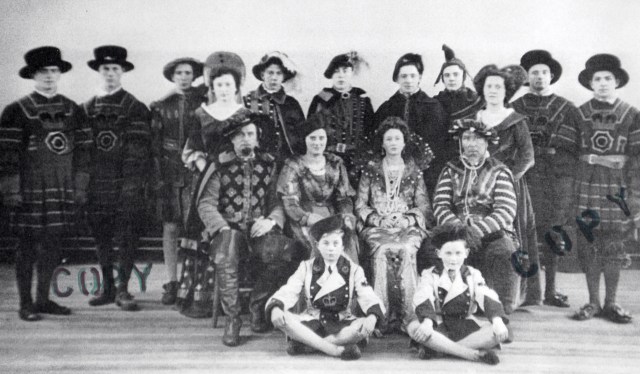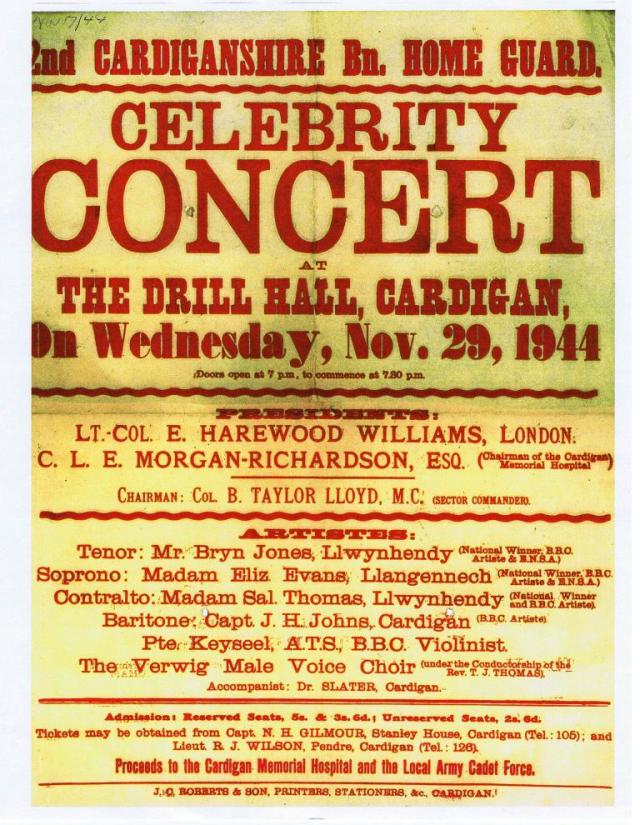Cardigan says farewell to Richard (14.8.2021)



Diolch yn fawr i Stuart Ladd am y lluniau.
Thanks very much to Stuart Ladd for the photos.




Diolch yn fawr i Stuart Ladd am y lluniau.
Thanks very much to Stuart Ladd for the photos.


Wyn and Elin Fflur.
Thanks to Keith Ladd for this photograph, taken in Cardigan market.
Keith extends his sympathy to Wyn’s family on their loss.


https://cardiganthroughtheages.wordpress.com/cardigan-county-school-1898-2018/
https://aberteifidrwyrcanrifoedd.wordpress.com/ysgol-uwchradd-aberteifi-1898-2018/
Saturday Night at the Black: Cardigan in the Swinging Sixties. 183pp. with over 100 illustrations, many of which you will not have seen before, by William H. Howells. Price £10. Printed by E. L. Jones, Aberteifi. ISBN 978 1 78280 7698
It’s a remarkable story! The background is the close connection between some of the town’s characters and those linked with the emerging Liverpool music scene at the time. People like the dramatist Alun Owen, who came to live in St Dogmael’s between 1963 and 1967; Allan Williams, the Beatles’ first manager; Bill Harry, founder and editor of the pioneering Mersey Beat newspaper; Bob Wooler, the Cavern’s famous DJ; and George Melly, who bought a summer house in Pen-y-bryn. This motley crew, with their partners, were warmly welcomed by Frank Aspinall, of the Black Lion, and with their help organised Liverpool bands to play in the Black.
The book contains a complete list of all the groups who played there between 1963 and 1973. At first they came from the Cavern – many via the Kaiserkeller and other Hamburg clubs. Do you remember the visit of Screaming Lord Sutch to Cardigan? What about Rory Storm and the Hurricanes; Ian and the Zodiacs; The Clayton Squares; Vince Earl and the Talismen; Freddie Starr and the Nightriders; Sony Webb and the Cascades; Derry Wilkie and the Pressmen; The Kirkbys; The Masterminds; The Chessmen and The Kinsleys and many more?
Later the groups came from South Wales: do you remember James Hogg, The Iveys; Haverson Apricot; Peter Shane and the Vikings – and let’s not forget local groups including Ricky and the Raiders and Strawberry Maize?
Every Saturday night over 200 teenagers flowed into the town from a wide area of Cardiganshire, Pembrokeshire and Carmarthenshire to dance, to listen to music and to enjoy.
But not everyone was happy with these developments. Parents warned their offsprings not to go near such a place, and the respectable town councillors were unhappy that the Black gave the town a bad image.
Cardigan has not seen anything like this before or since.
Read the truth about the connection of the Beatles with the local Eisteddfod!
Read about the close link between ‘A Hard Day’s Night’ and St Dogmael’s.
You’ll be surprised to read the candid memories of those who were a part of the scene.
Available in bookshops NOW £10.

20 1949 (Wed.) Handel’s Messiah at Bethania. Soloists included Jennifer Vyvyan; Gwyneth Morgan; Trefor Anthony; and Hubert Hughes; Idris Griffith, Llanelli, organist; Conductor Andrew Williams. Notable especially for the collapse and death of Revd Esaia Williams, Bethania in the pulpit while addressing the congregation.
William Roberts (1862–1912)
[The notes below are based on a biography written by Revd Esaia Williams, 19 April, 1935 CTA]
William Roberts was born on 1 October 1862 in a house called Farmers’ Arms, Bridge St., Cardigan. [ 21 Castle St.]. His father, John, was a native of Cardigan, raised up in St Marys St. A sailor by trade he spent his life at sea. His mother Mary, was originally from Rafael, near Blaenffos. They had four children: Mary Ann, another William who died young, Sarah Lizzie and William. Their mother died young and the children were brought up by their aunt Mrs Martha Roberts.
William was of small stature, a result of a childhood accident. He received his early education at the British School held at the old Bethania Chapel (Central Café). Edward Penfelyn (Iorwerth Penfelyn) was his schoolmaster, an exceptional man.
After leaving school William Roberts was apprenticed as a furniture maker with Griffith Griffiths, Castle St. He worked some years with David Lewis, Llanifor, Penparc, opposite the Eagle Inn, but because of his frailty he had to give up work as a carpenter. He eventually opened a shop in Bridge St. and remained there for the rest of his life. The shop, opposite Quay St. was taken down c. 1933.
William Roberts was not noted for his public skills, but ‘no-one was more faithful in church. One of the dearest, harmless and gentlest of souls, but when called upon to stand on a principle, he could be as brave as a lion, and loud in his protest against sin in all its manifestations’.
He excelled as a musician. In 1882 some of the musicians in Bethania Chapel invited Mr Benjamin Lewis, Blaenannerch to arrange a sol-fa class. William Roberts joined. By the end of the season every member of the 50 plus class was able to read any tune at the first reading. Benjamin Lewis later migrated to America. After taking an interest in music he continued to study. His first instrument was a fife, then a fiddle. A travelling Italian wandered through Cardigan one day and was playing a harp. The music reached William Roberts’ ears and he managed to strike a bargain and persuade the Italian to part with his instrument. He then began to compose. He and others used to walk to Cilgerran to learn composition with the Revd W. Cynon Evans and his wife. (They later moved to Blaencwm, Rhondda). He was a founder member of the town’s orchestra. He was a faithful member of the Cardigan Male Voice Party, under the leadership of William Thomas, Carningli.
William Roberts’ compositions included Bryngogarth, Blaenffos, Glanteifi, Llandudoch, Rhosgerdd, Cemaes, Bridge Street and William
For Children: Clodfori’r Gwaredwr, Dewuch ataf fi, Annwyl Iesu. The work he is best remembered for is Bryngogarth.
When the Revd John Williams, Bethania was returning from a service in Pembrokeshire late one evening he noticed a light on with William Roberts, and when he passed the window he tapped it with his whip. The following morning he went to visit William Roberts, and said: ‘What were you doing down so late at night? O! Mr Williams it was you. To tell truth I was putting the finishing touches to a tune on the words: ‘Anghrediniaeth, gad fi’n llonydd’
That tune was then called Bryngogarth after the Revd John Williams’ house in Napier Street.
William Roberts died 6 April 1912 aged 50 years, and was buried in Blaenffos cemetery.
‘I receive almost daily letters from Conservatives in Cardiganshire, indicating that they intend to support me at the next election’ Roderic Bowen MP
‘I have been struck during the time of my candidature by the number of Liberals in the county, and some who have supported the Liberal cause for many years, who have approached me of their own free will and wished me well’ Dr S G Little, prospective Cons candidate
‘Prospects for Socialism in Cardiganshire are very bright. Everyday farmers are coming over to our side’ Iwan Morgan, prospective Labour candidate
CTA report. Roderic Bowen won the next election (1950) – until 1966.
12 m 6m 3m
Preference £3 35/- –
Postal 30/- 17/6 10/6
Class A 25/- 14/6 9/-
Class B 12/6 7/- 4/-
21 1951 (Wed.) Cardigan and District Choral Society Annual Concert: Mendelssohn’s ‘Saint Paul’. Sop Marjories Shires; Tenor: Llewelyn John; Bass: Trevor Anthony; Contralto: Olga Bonnell. Organist: Prof Ted Morgan; Conductor: Andrew Williams LRAM, ARCM